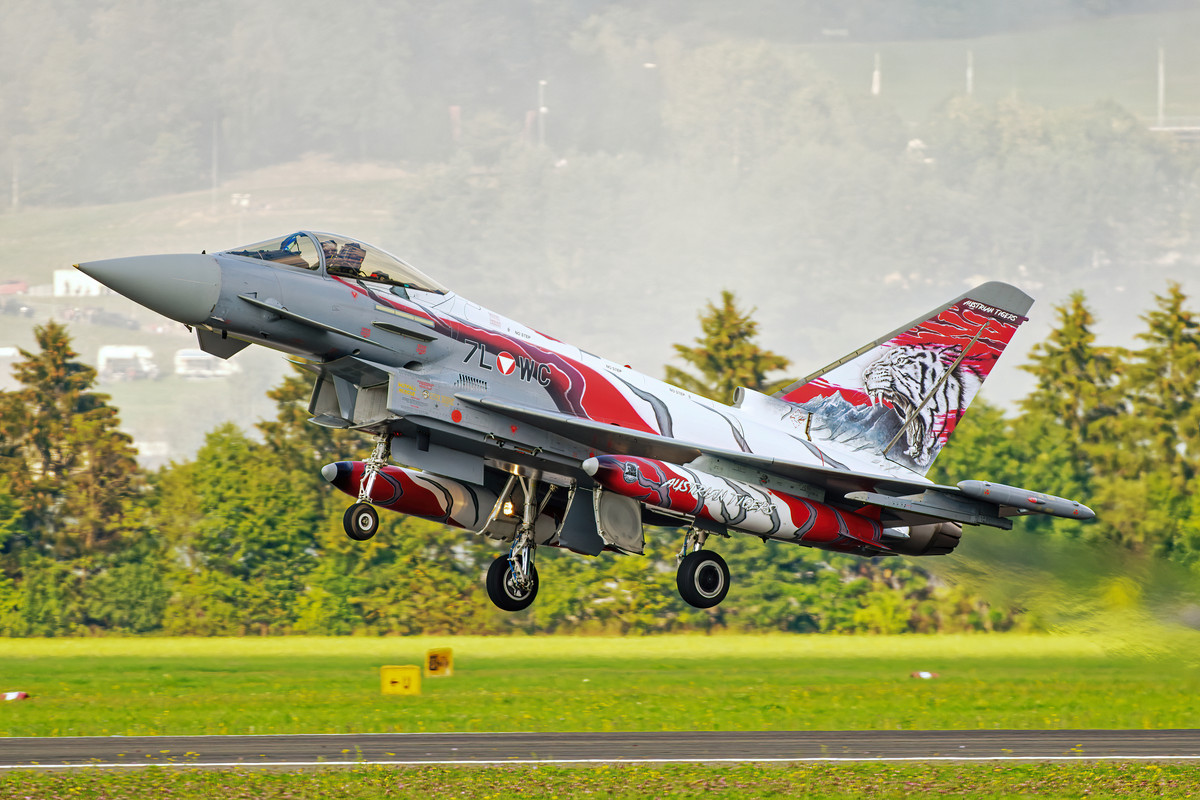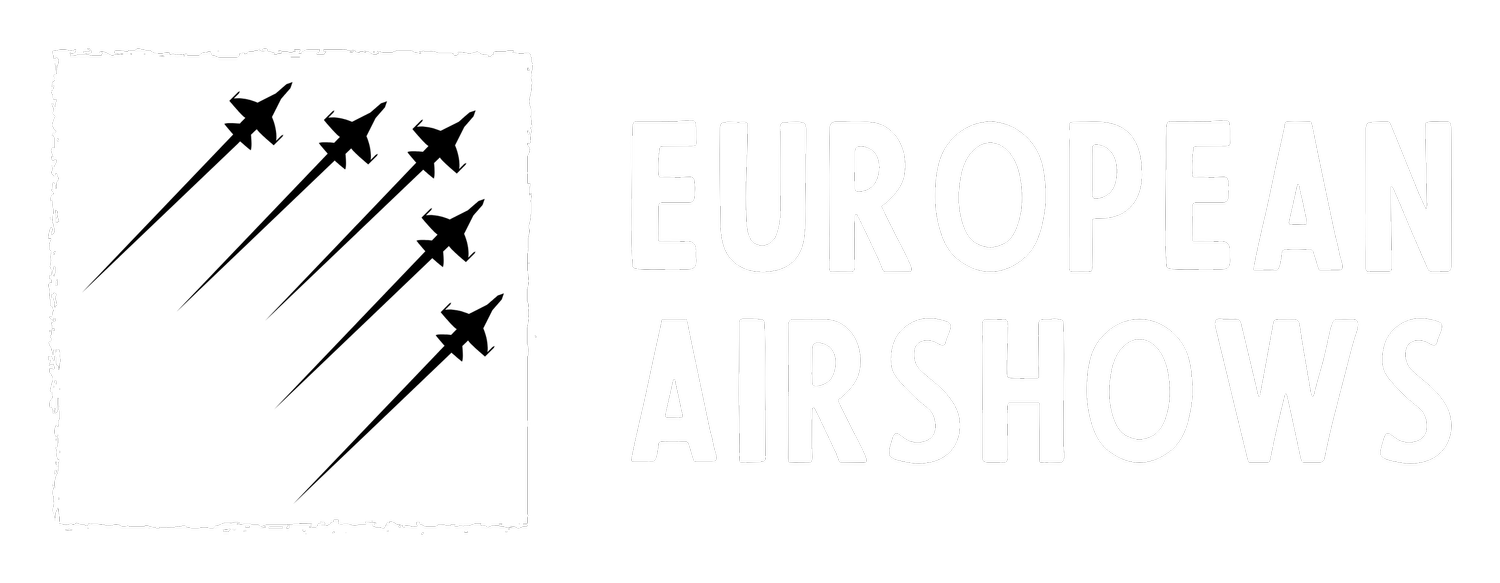
Austrian Air Force Eurofighter Display Team
Eurofighter Display Team
The Austrian Air Force Eurofighter Display Team distinguishes itself by not being an official display team, unlike the dedicated aerobatic squads of many other air forces. Instead, its performances are closely tied to the Airpower Zeltweg Airshow, a renowned biennial event hosted at Zeltweg Air Base in Austria. This major airshow, one of the largest in Europe, draws massive crowds every two years, and during these occasions, the team ramps up its activity to showcase the impressive capabilities of the Eurofighter Typhoon, Austria’s premier fighter jet, captivating both local and international spectators.
Central to their presentation is the solo display, where a lone Eurofighter Typhoon takes to the skies, piloted by a highly skilled aviator who executes a series of awe-inspiring aerobatic maneuvers. With the use of smoke winders, the aircraft traces patterns against the sky, highlighting its remarkable agility, speed, and power through loops, rolls, and high-speed passes. Beyond the solo act, the team occasionally elevates the spectacle with a dogfight demonstration featuring a second Typhoon, simulating intense aerial combat, or an interception scenario involving an Austrian C-130 Hercules, showcasing the fighter’s versatility. These additional performances, however, are special highlights primarily reserved for the Airpower Zeltweg Airshow, making them a rare sight outside of Austria.
About the Eurofighter Typhoon
The Eurofighter Typhoon is a European multinational twin-engine, supersonic, canard-delta wing, multirole fighter aircraft. Its origins trace back to 1983, when the United Kingdom, Germany, France, Italy, and Spain launched the Future European Fighter Aircraft (FEFA) programme to develop a next-generation air superiority fighter to counter Soviet threats. After France withdrew in 1985 over design differences, the remaining nations formed the Eurofighter Jagdflugzeug GmbH consortium in 1986, with Airbus, BAE Systems, and Leonardo as key partners. The first prototype took flight in 1994, and the Typhoon officially entered service with the Royal Air Force in 2003, later being adopted by Germany, Italy, Spain, Austria, and several non-European nations including Saudi Arabia and Qatar.
Renowned for its agility, the Typhoon features advanced avionics, powerful EJ200 engines enabling speeds above Mach 2, and a fly-by-wire control system for exceptional maneuverability. It is equipped with a versatile arsenal, including air-to-air missiles like the Meteor and air-to-ground weapons such as the Storm Shadow, supported by cutting-edge systems like the CAPTOR-E AESA radar and Defensive Aids Sub System (DASS). Designed primarily for air superiority, its multirole capabilities also encompass ground attack and reconnaissance, making it a vital asset in modern air forces.
The Eurofighter programme represents one of Europe’s largest defense collaborations, employing over 100,000 workers across its supply chain. Produced in multiple tranches with ongoing upgrades, over 600 Typhoons have been delivered as of 2023. Future enhancements aim to improve sensors and interoperability, ensuring the aircraft’s relevance beyond 2060. The Typhoon’s development and production underscore a successful multinational effort to maintain technological and strategic superiority in air combat.
Specifications
Crew
1 or 2
Length
15.96 m (52 ft 4 in)
Wingspan
10.95 m (35 ft 11 in)
Height
5.28 m (17 ft 4 in)
Max Speed
2,500 km/h (Mach 2.35) at 11 km altitude
Combat Range
1,389 km (863 mi, 750 nmi) ground attack, hi-lo-hi
Service Ceiling
16,764 m (55,000 ft)
Armament Capacity
13 Hardpoints
Eurofighter Typhoon in the Austrian Air Force
In 2003, Austria chose the Eurofighter Typhoon to bolster its air defense, opting for 18 aircraft over alternatives like the F-16 and Saab Gripen, though this was later reduced to 15 due to budget cuts. Deliveries of these Tranche 1 models began on July 12, 2007, at Zeltweg Air Base, concluding in 2009. Operated by the Austrian Air Force’s Surveillance Wing, the Typhoons are primarily tasked with air defense and Quick Reaction Alert (QRA) missions, quickly proving their worth with 73 scrambles by late 2007 to intercept unidentified aircraft.
The acquisition sparked controversy, with a 2008 audit revealing Austria paid more for used Tranche 1 jets instead of the planned Tranche 2 models, amid allegations of corruption that led to dropped investigations. Despite this, the fleet was upgraded to the latest Tranche 1 standard by 2013 and remains Austria’s primary fighter. While operational challenges, like a shortage of pilots in 2014, have arisen, 2022 plans to enhance the Typhoons with night vision, self-defense systems, and medium-range missiles signal their continued role in securing Austrian airspace as of 2023.
Did You Know?
- The Eurofighter Typhoon can supercruise, meaning it can fly at supersonic speeds without using afterburners, which saves fuel and increases stealth.
- It features a helmet-mounted display system that allows pilots to target enemies just by looking at them.
- The Typhoon's airframe is constructed with advanced materials, including carbon fiber composites, making it both lightweight and strong.
- It can carry a diverse array of weapons, including air-to-air missiles, air-to-ground missiles, and bombs, underscoring its multirole capabilities.
- The aircraft is equipped with a unique voice input system, enabling pilots to control certain functions using voice commands.
Test Your Knowledge
1. What is the maximum speed of the Eurofighter Typhoon at 11 km altitude?


































